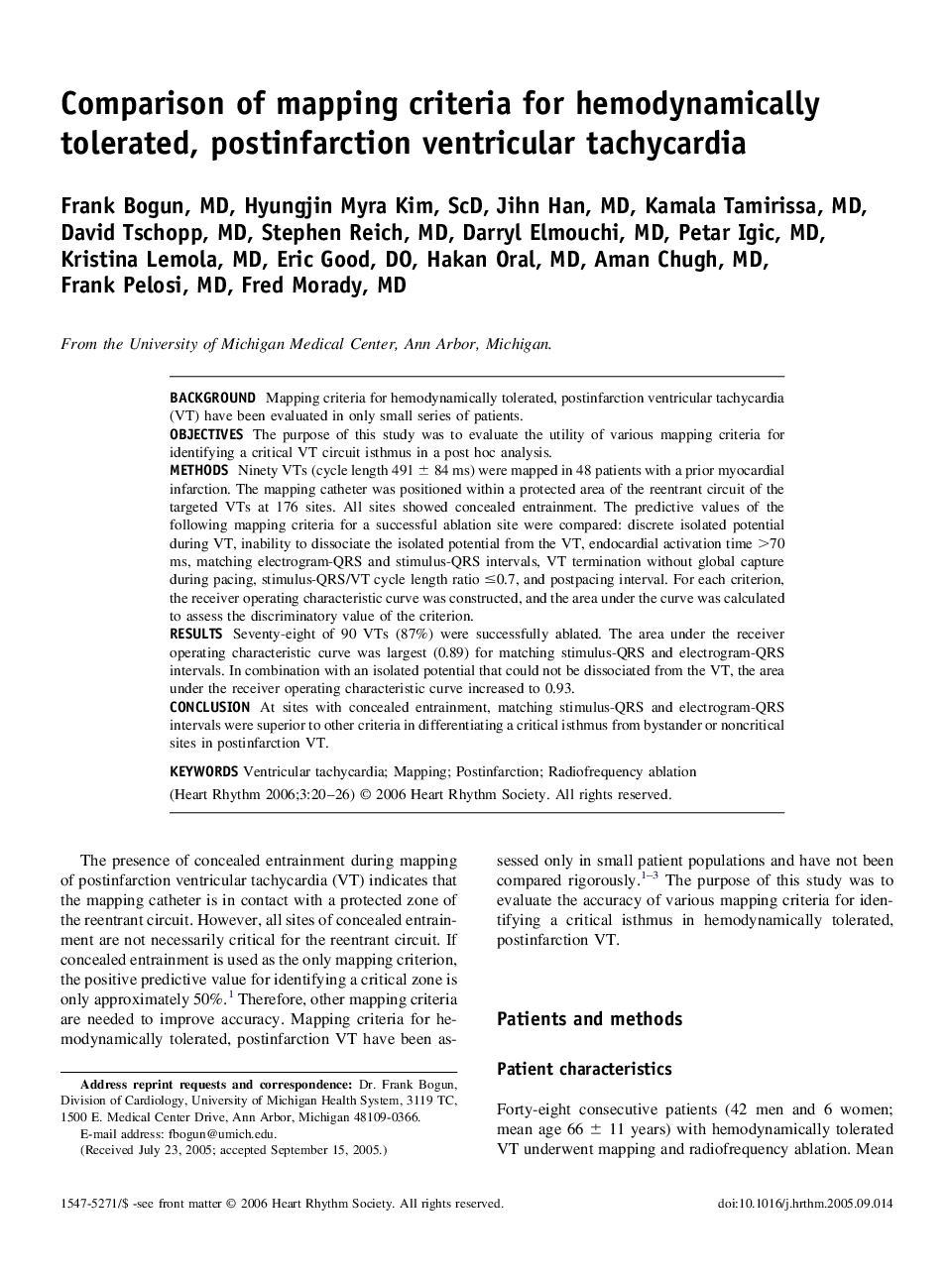| کد مقاله | کد نشریه | سال انتشار | مقاله انگلیسی | نسخه تمام متن |
|---|---|---|---|---|
| 2924743 | 1175916 | 2006 | 7 صفحه PDF | دانلود رایگان |

BackgroundMapping criteria for hemodynamically tolerated, postinfarction ventricular tachycardia (VT) have been evaluated in only small series of patients.ObjectivesThe purpose of this study was to evaluate the utility of various mapping criteria for identifying a critical VT circuit isthmus in a post hoc analysis.MethodsNinety VTs (cycle length 491 ± 84 ms) were mapped in 48 patients with a prior myocardial infarction. The mapping catheter was positioned within a protected area of the reentrant circuit of the targeted VTs at 176 sites. All sites showed concealed entrainment. The predictive values of the following mapping criteria for a successful ablation site were compared: discrete isolated potential during VT, inability to dissociate the isolated potential from the VT, endocardial activation time >70 ms, matching electrogram-QRS and stimulus-QRS intervals, VT termination without global capture during pacing, stimulus-QRS/VT cycle length ratio ≤0.7, and postpacing interval. For each criterion, the receiver operating characteristic curve was constructed, and the area under the curve was calculated to assess the discriminatory value of the criterion.ResultsSeventy-eight of 90 VTs (87%) were successfully ablated. The area under the receiver operating characteristic curve was largest (0.89) for matching stimulus-QRS and electrogram-QRS intervals. In combination with an isolated potential that could not be dissociated from the VT, the area under the receiver operating characteristic curve increased to 0.93.ConclusionAt sites with concealed entrainment, matching stimulus-QRS and electrogram-QRS intervals were superior to other criteria in differentiating a critical isthmus from bystander or noncritical sites in postinfarction VT.
Journal: Heart Rhythm - Volume 3, Issue 1, January 2006, Pages 20–26